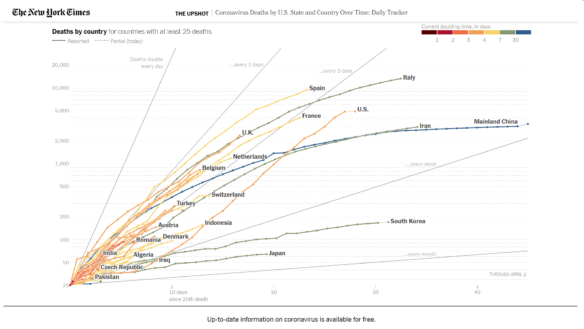
Bottom Line Up Front (BLUF): Be cool. Wear a mask.
Today my husband read a Washington Post editorial that encouraged all to start wearing masks.
Half of those testing positive for COVID-19 are non-symptomatic (Iceland study). And it’s hayfever season north of the equator, so folks will be coughing and sneezing into hands or onto others, thinking it isn’t serious (since they know they aren’t “sick”).
The Washington Post article shares a Hong Kong website for creating a disposable mask from paper toweling and a page protector. It’s worth noting that Hong Kong has one of the lowest rates of infection in the world.
Those of us with camp bandanas can make like a bandit. Or make something with used clothes (t-shirts) and hot glue. For these fabric masks, you’ll need to wash them between uses.
For those of us with random fabric squares and a sewing machine, here are a couple of videos for how to sew a mask.
Simplest is this DIY mask from Jenny Doan of Missouri Star Quilt Company. At the least, this mask keeps you from touching your own face. Though not as good as a N95 mask, it still has some value in reducing likelihood that you’ll either inhale or exhale COVID-19 nastiness. This pattern is simple enough that it’s nothing to whip out several so you always can have a clean one on hand for each family member.
Next is a mask from Joanne L. at Craft Passion. She created this design in 2013 to protect her kids from smoke/haze from agricultural burning, and has pdfs for several sizes. This design lets you add additional disposable filtration between the inner and outer layers and lets you add wire to get a better fit on the bridge of your nose. For those wearing glasses, this keeps your glasses from fogging up from breath escaping from the top of a mask – useful for that reason alone (plus further reduces chances of viral nastiness getting in or out). More effort than Jenny Doan’s mask, but worth it for those possessed of both sewing skills and anxiety for health-compromised family members.
If you’re good at sewing and looking for something useful to do, various hospital and medical personnel are short on N95 masks, often having to go the entire day with a single mask (or go without). Wearing simple fabric masks over the N95 masks allows these medical personnel to use a freshly-sanitized mask for each person. Deaconess has a website listing organizations in the United States looking for donations of sewn masks. There are also various Facebook groups popping up to address this medical need.

